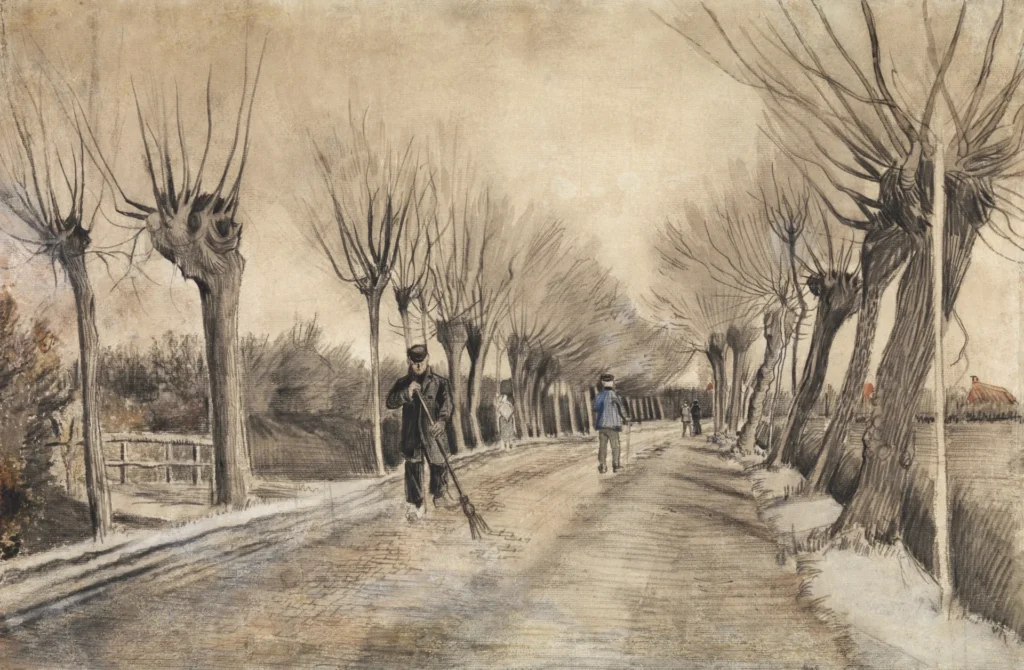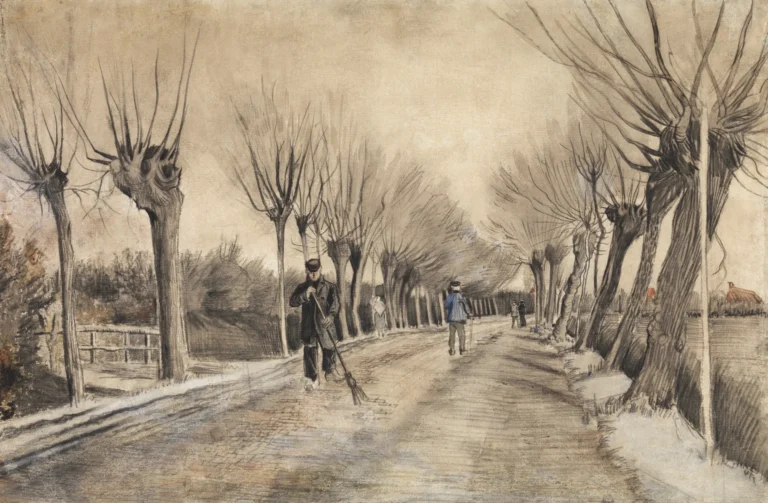Road In Etten (1881)
Executed in 1881, Vincent van Gogh's Road in Etten is a compelling depiction of a winter scene. The drawing, measuring 15 1/2 x 22 3/4 inches, brings to life a road lined with pollard willows, where a man sweeps, contributing to the tranquil essence of daily rural activities. This artwork marks Van Gogh's early exploration of forms and subjects, prefiguring his later, more vibrant color palette, while retaining a serene, pastoral charm.
Year 1881
About the Artwork
Road in Etten was created during Van Gogh's formative years after he moved back home to Etten. This period marked a crucial transition for him as he fully embraced art. The drawing illustrates his surroundings and the simplicity of life, allowing him to hone his artistic skills. Here, Van Gogh focuses on mundane tasks and landscapes, emphasizing the beauty found in everyday life. The road sweeping scene serves as a metaphor for his own artistic journey—one of labor and devotion to his craft, long before he became the famed artist known today.
Did You Know
Etten is significant in Van Gogh’s life as it is where he spent his formative years and is the place where he truly began to pursue art seriously after years of uncertainty about his career.
The serene rural landscape, as depicted in Road in Etten, reflects Van Gogh’s deep connection to the natural world, which remained a central theme throughout his artistic career, influencing many of his iconic later works.
Van Gogh’s use of mixed media—incorporating chalk, pencil, pastel, and watercolor—demonstrates his innovative approach as he experimented with different materials, setting a foundation for his unique artistic style.










